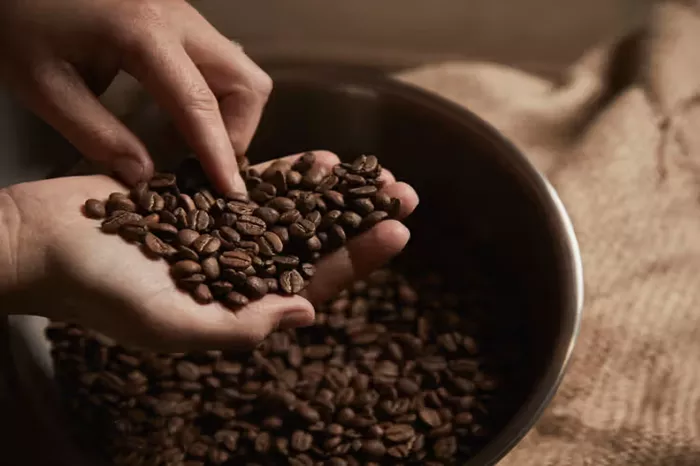Blending coffee beans at home is a great way to create your own signature flavor. By mixing different beans, roast levels, and grind sizes, you can craft a cup of coffee that suits your personal taste. This guide will walk you through every step of the process in simple terms, whether you’re a casual drinker or a home barista.
Understanding Coffee Bean Varieties
Before blending, it’s important to know the types of beans you’re working with. The two main species used in coffee are Arabica and Robusta.
Arabica Beans
- Grown at higher altitudes.
- Smoother, more delicate flavor.
- Notes of fruit, sugar, and floral tones.
- Less caffeine than Robusta.
Robusta Beans
- Grown at lower altitudes.
- Stronger, more bitter taste.
- Earthy or nutty notes.
- Higher caffeine content.
Specialty Beans
- These can be either Arabica or Robusta.
- Grown with extra care, often single-origin or micro-lot.
- Traceable to a specific farm.
- Tend to have unique flavor profiles.
Understanding these types will help you choose beans that blend well together and meet your taste goals.
Choosing Beans Based on Flavor Profiles
Different origins offer different flavors. Here are four popular bean origins and what they bring to a blend:
Brazilian Beans
- Nutty, chocolatey, low acidity.
- Great as a base in blends.
Colombian Beans
- Balanced, mild, hints of caramel.
- Adds smoothness and body.
Ethiopian Beans
- Bright, fruity, floral.
- Adds complexity and high notes.
Kenyan Beans
- Bold, tangy, wine-like acidity.
- Good for brightness and depth.
When blending, start with a base bean like Brazilian or Colombian, then add small amounts of more vibrant beans like Ethiopian or Kenyan to add layers of flavor.
Selecting Roast Levels
Roast level affects both flavor and body. A good blend often combines different roast levels for depth.
Light Roast
- Retains origin flavors.
- Bright, acidic, sometimes floral or fruity.
Medium Roast
- Balanced acidity and sweetness.
- More body than light roast.
Dark Roast
- Bold, bitter, smoky or chocolaty.
- Less origin character, more roast flavor.
For example, mixing a medium-roast Brazilian bean with a light-roast Ethiopian can give you a smooth base with a bright, fruity finish.
Grinding Techniques
Grind size matters. It affects how water flows through the coffee and extracts flavor.
Coarse grind (like sea salt): Best for French press. Full-bodied but less acidic.
Medium grind (like sand): Ideal for drip coffee makers and pour-over. Balanced flavor.
Fine grind (like table salt): Best for espresso. Strong, concentrated flavor.
When blending beans, make sure to grind them uniformly. Uneven grinding can cause over- or under-extraction, ruining the balance of your blend.
Ratios & Proportions
Blending is all about balance. Start with a 70/30 ratio:
- 70% base bean (smooth and mellow)
- 30% highlight bean (bright or bold)
Here are some example combinations:
- 70% Brazilian (nutty) + 30% Ethiopian (fruity)
- 60% Colombian (sweet) + 40% Kenyan (tangy)
- 50% medium-roast + 50% light-roast of the same origin for roast contrast
- Always take notes on your blends. Keep track of what you like, and adjust as you go.
Experimenting with Origins
The fun of blending is trying new combinations. You can mix beans from different countries or even from different farms in the same country.
Try these ideas:
Latin American + African: Brazil for body, Ethiopia for fruit.
Central American + Indonesian: Guatemala for cocoa notes, Sumatra for earthy body.
Single farm + regional blend: A Colombian single-origin with a Panamanian blend.
Layering different origins gives you a more complex and satisfying cup.
Incorporating Specialty Beans
Specialty beans add a premium touch to your blend. Use them sparingly or as highlights.
Single-origin: Unique flavors based on one location. Adds identity to your blend.
Micro-lot: Beans from a small batch or a specific part of a farm. Often rare.
Add 10–30% of a specialty bean to a regular base for a luxurious upgrade.
Storage & Aging – Keeping Blended Beans Fresh and Aromatic
Freshness is key to good coffee. After blending, store your beans properly:
- Use airtight containers.
- Keep away from light, heat, and moisture.
- Store at room temperature.
- Avoid the fridge or freezer unless vacuum-sealed.
Let your blend rest for 1–3 days after blending for the flavors to settle. This is similar to letting meat rest after cooking—it improves the final taste.
Brewing Methods for Blended Coffee
The way you brew affects the flavor of your blend. Different methods highlight different aspects of the coffee.
Espresso
- Works best with bold, well-balanced blends.
- Use a fine grind.
- Good for chocolatey and nutty flavors.
Pour-Over
- Highlights clarity and brightness.
- Use a medium grind.
- Good for floral and fruity blends.
French Press
- Emphasizes body and richness.
- Use a coarse grind.
- Good for earthy or chocolatey profiles.
- Try your blend with different methods to find what suits it best.
Common Mistakes to Avoid
Blending coffee is creative, but there are a few pitfalls:
Too much of one bean: Overpowers the rest. Keep balance in mind.
Inconsistent grind: Leads to uneven extraction. Always grind fresh and evenly.
Mixing incompatible beans: Some origins don’t blend well. Taste each bean separately before blending.
Poor storage: Beans lose flavor quickly if not stored right.
Not taking notes: You won’t remember what worked. Keep a blending journal.
Avoiding these mistakes will improve your results every time.
Conclusion
Blending coffee beans at home is both an art and a science. By understanding your beans, playing with roast levels, grinding properly, and experimenting with ratios and origins, you can create blends that are better than store-bought. Keep your beans fresh, take notes, and enjoy the process. With practice, you’ll craft the perfect cup that reflects your own taste and creativity. Happy blending!
Related topics:
- 5 Best Whole Beans Coffee for Drip
- 4 Best Types of Coffee Beans for French Press
- 3 Best Coffee Beans for Latte


